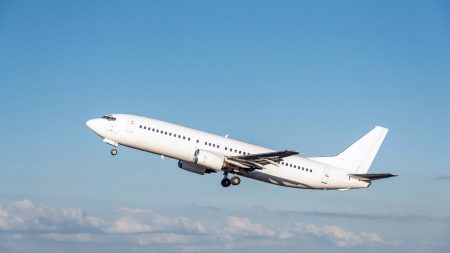Key takeaways
- If the majority of your travel is within the United States, TSA PreCheck is probably the better choice for you, but if you regularly travel outside of the United States, you should consider Global Entry.
- If you travel both domestically and internationally, choose Global Entry, because Global Entry includes TSA PreCheck membership, but TSA PreCheck does not include Global Entry membership.
- If you want to get reimbursed for the TSA PreCheck or Global Entry application fee, many top travel credit cards offer reimbursements in the form of statement credits for the full application fee in either program.
If you’re a frequent flyer, you’ve probably asked yourself whether it’s worth applying for TSA PreCheck in order to skip the standard airport security lines, and if you travel internationally on a regular basis, you might wonder if it’s worth applying for Global Entry so you can access the time-saving Global Entry kiosks when you return to the U.S.
But if you travel both domestically and internationally, which program should you apply for? Should you apply for both? Let’s take a closer look at both programs to help you decide which Trusted Traveler Program (TTP) is right for you.
What is TSA PreCheck?
TSA PreCheck is a Trusted Traveler Program administered by the U.S. Department of Homeland Security’s Transportation Security Administration (TSA). Once you complete the online application and pass the in-person background check, you’ll receive a Known Traveler Number (KTN) that you can enter whenever you book a flight.
Once your Known Traveler Number is added to your flight reservation, your ticket will be given the TSA PreCheck stamp of approval. This is how you’ll get access to an expedited airport security line. When you’re in the TSA PreCheck security line, you’ll no longer need to remove your shoes, belt or light jacket before clearing airport security. You can even leave your laptop and your TSA-approved liquids and gels in your carry-on bag.
Keep in mind: TSA PreCheck does not override the authority of airport security. You can still be subject to the occasional random selection for traditional airport security screening, so you should factor that in when asking yourself how early to leave for the airport.
TSA PreCheck benefits
For most travelers, the biggest benefit of TSA PreCheck is the expedited airport security line. Whether you like being able to clear airport security in less time or simply enjoy keeping your shoes on and your luggage packed during the screening process, TSA PreCheck has a lot to offer. If you travel often, it’s worth taking the time to complete a TSA PreCheck application and become a Trusted Traveler.
TSA PreCheck availability
TSA PreCheck is available at over 200 domestic airports and 90 airlines. If you want to know whether your local airport or favorite airline offers TSA PreCheck, check TSA PreCheck’s Airports and Airlines map.
TSA PreCheck eligibility
If you are a U.S. citizen or a lawful permanent U.S. resident, you are eligible to apply for TSA PreCheck.
TSA PreCheck application process and cost
The TSA PreCheck application process includes two simple steps:
- Fill out the online application with basic personal information. The online application will ask you for details such as your address and date of birth. This step should take about five minutes.
- Schedule a 10-minute appointment at a TSA PreCheck enrollment center. Once there, you’ll do your fingerprinting and document and photo capture. This is also where you’ll pay your application fee.
This two-step application process costs $78 if you enroll through IDEMIA, $77.95 if you enroll through Clear and $85 if you enroll through Telos. Your TSA PreCheck enrollment status remains valid for five years. Once it’s time to renew your membership, you can do so online or in person:
- Online renewal fee: $70 for IDEMIA and Telos, $68.95 for Clear
- In-person renewal fee: $78 for IDEMIA, $70 for Telos and $77.95 for Clear
However, many top travel credit cards offer reimbursement in the form of statement credits for the full TSA PreCheck application cost, so you might want to see if your credit card covers TSA PreCheck membership fees before you apply.
The best travel credit cards also come with other cost-saving benefits like travel insurance and airport lounge access, so it would be useful for all frequent flyers to have at least one good travel credit card in their wallets.
What is Global Entry?
Like TSA PreCheck, Global Entry is a Trusted Traveler Program administered by the federal government. Unlike TSA PreCheck, which is for domestic travel, Global Entry is designed to help travelers expedite the customs process when returning to the United States after traveling internationally.
Travelers with Global Entry membership can use Global Entry kiosks when re-entering the United States. This eliminates the need for an in-person customs interview and allows travelers to skip the process of filling out customs paperwork. Global Entry kiosks use fingerprint verification to confirm identity, and travelers can complete their customs declaration at the kiosk.
Notably, Global Entry membership automatically includes TSA PreCheck membership. This means that travelers with Global Entry can enjoy a faster screening process whether they’re traveling domestically or returning to the United States after a trip abroad.
Global Entry benefits
For most people who travel internationally on a regular basis, the biggest benefit of Global Entry is the ability to access expedited customs processes on their return to the United States. Plus, since Global Entry includes TSA PreCheck, successfully completing the Global Entry application process gives you access to two Trusted Traveler Programs instead of just one.
Global Entry availability
Global Entry kiosks are available at more than 75 airports. If you want to know whether your nearest airport offers expedited customs processes to travelers with a Global Entry membership, the U.S. Customs and Border Protection’s (CBP) website offers a complete list of airports with Global Entry kiosks.
Global Entry eligibility
If you are a U.S. citizen or a lawful permanent U.S. resident, you are eligible to apply for Global Entry. Citizens of select countries may also be eligible to apply.
Global Entry application process and cost
The Global Entry application includes the following steps:
- Create a Trusted Traveler Programs account. This will allow you to apply for any TTP.
- Fill out the online application for Global Entry. The application allows you to be conditionally approved for a membership but does not offer complete approval. You’ll also have to pay a $100 non-refundable application fee when you fill it out.
- Set up an in-person interview at an authorized Global Entry Enrollment Center. Once you receive your conditional approval status and set up your in-person interview, you’ll have to pass an in-depth background check. If you’re approved, your Global Entry membership will last for five years.
The Global Entry application process can be more time-consuming than the TSA PreCheck application process. The Department of Homeland Security states that applications are typically vetted within two weeks after the submission of the application, but if a manual review of the application is needed, then processing time can jump drastically — between 12 to 24 months, at the time of writing.
Some travelers may be able to use the Enrollment on Arrival program to speed up the process, however. If you are flying into the U.S. after traveling internationally, and you’ve been conditionally approved, you may be able to complete your Global Entry interview as you clear customs without having to set up an interview in advance.
As with TSA PreCheck, many top travel credit cards offer statement credits to cover the cost of your Global Entry application fee — which is good because Global Entry is a little more expensive than TSA PreCheck. In fact, these types of credit cards will typically offer a benefit of up to $100 in statement credits to cover either TSA PreCheck or Global Entry application fees.
Which is better: Global Entry or TSA PreCheck?
Trying to decide between Global Entry and TSA PreCheck? What you really need to do is ask yourself how often you plan to travel internationally.
If the majority of your travel is within the United States, TSA PreCheck is probably the better choice for you. Once you’re enrolled in TSA PreCheck, you’ll be able to use your Trusted Traveler status to access expedited security lines at over 200 airports in the United States.
If you regularly travel outside of the United States, you should consider Global Entry, which will include TSA PreCheck anyway. Not only will you get all of the benefits of TSA PreCheck, but you’ll also be able to access an expedited customs process when you return to the United States after traveling abroad.
This chart can help you break down their differences and similarities:
| Program terms and perks | TSA PreCheck | Global Entry |
|---|---|---|
| Trusted Traveler Program | Yes | Yes |
| Benefits |
|
|
| Availability | 200+ U.S. airports and 90+ airlines | 75+ airports worldwide |
| Eligibility | U.S. citizens, U.S. nationals and U.S. lawful permanent residents | U.S. citizens, U.S. lawful permanent residents and select foreign nationals |
| Application cost | $77.95 to $85 | $100 |
| Renewal cost | $68.95 to $78 | $100 |
| Application processing time | Up to 60 days; usually 3 to 5 days | Usually two weeks, but can be over 12 months depending on whether a manual review is needed |
| Membership length | 5 years | 5 years |
| Application fee covered by some travel credit cards? | Yes, typically in the form of a statement credit | Yes, typically in the form of a statement credit |
If you’re still not sure, the Department of Homeland Security’s Trusted Traveler Program website can help you figure out which Trusted Traveler program is best for you.
Should you get both Global Entry and TSA PreCheck?
Since the Global Entry program includes TSA PreCheck, there is no reason to apply for both Global Entry and TSA PreCheck.
If you already have TSA PreCheck and want to switch to Global Entry, you’ll need to complete the entire Global Entry application process and pay the $100 application fee. This is why it’s a good idea to think about the benefits of having both Global Entry and TSA PreCheck before applying for either program.
Once you’ve settled on a program that works for your travel needs, you can start focusing on streamlining other aspects of your journey, such as using a co-branded credit card for flights or hotels.
The bottom line
Global Entry includes TSA PreCheck, but TSA PreCheck does not include Global Entry. So, if you’re planning on traveling internationally, you should just apply for Global Entry. That way, you’ll get the advantages of having both Global Entry and TSA PreCheck. And if you have a travel credit card that comes with statement credits for TTP benefits, the full cost of your application will be reimbursed.
For more travel tips and tricks, check out Bankrate’s travel toolkit.
Read the full article here
















